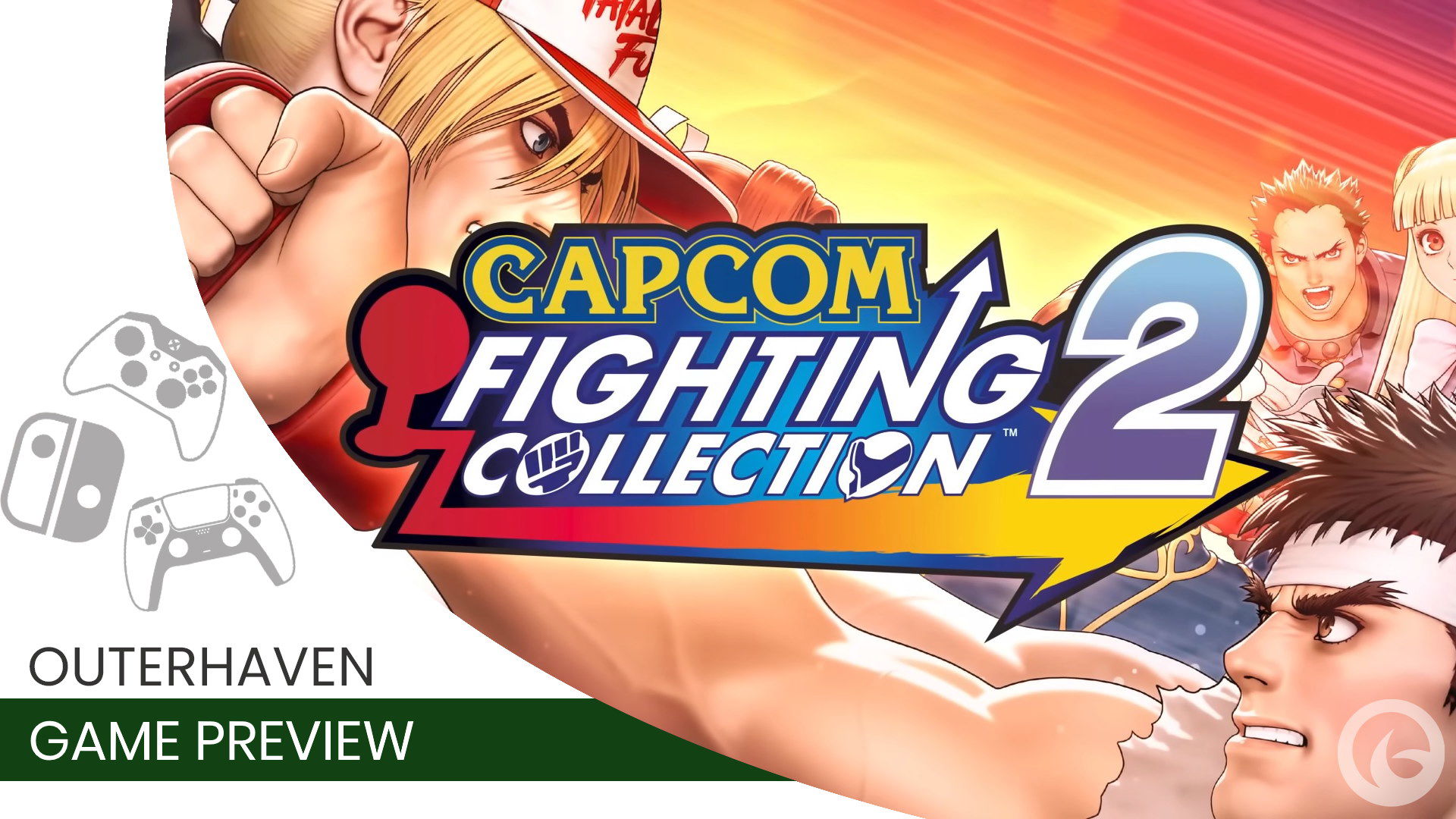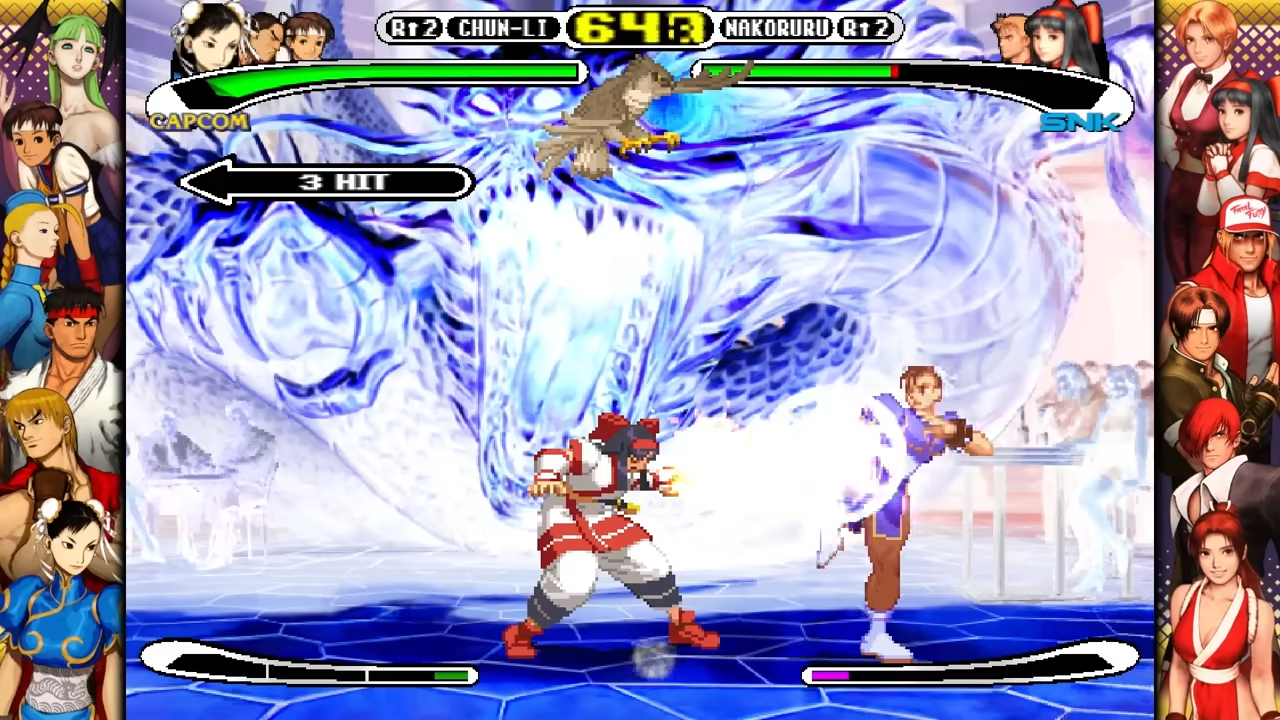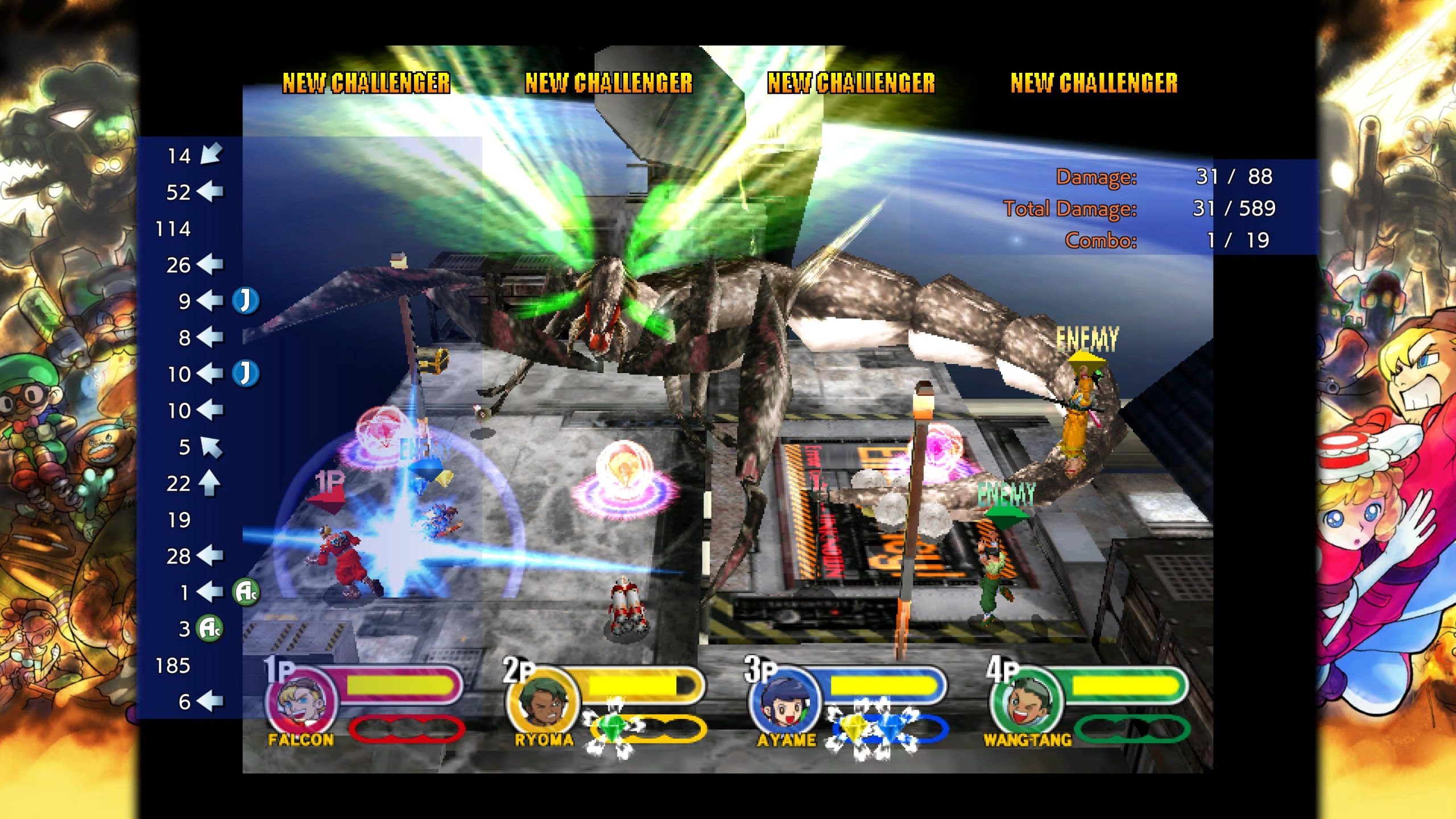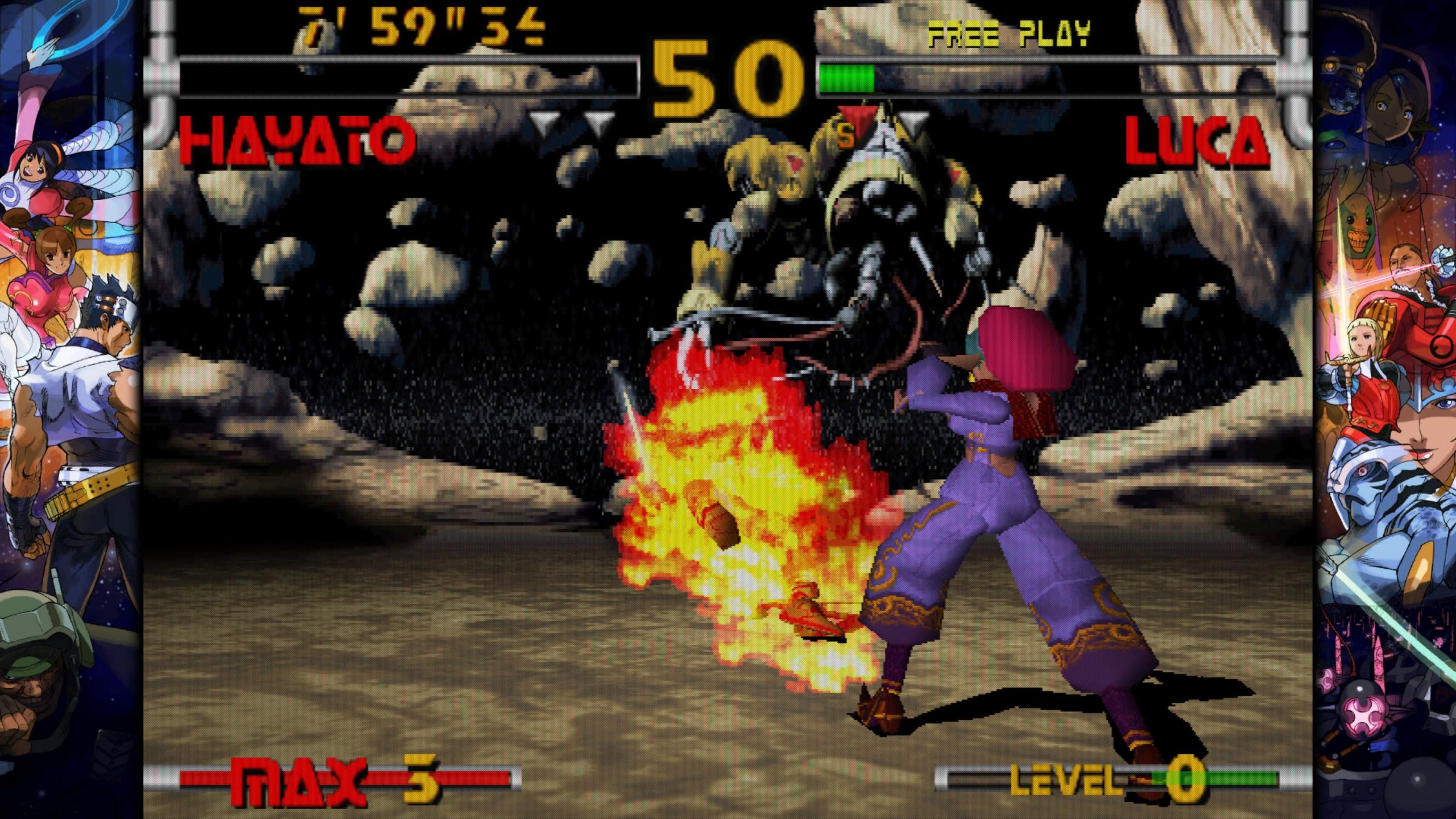Capcom has been on a hot streak, bringing nostalgia to fighting game enthusiasts everywhere with releases such as the Capcom Fighting Collection and Marvel vs. Capcom Fighting Collection. Now, Capcom gears up to unleash the highly anticipated Capcom Fighting Collection 2! Thanks to Capcom, we had the opportunity to dive in early and get hands-on experience with several titles in this thrilling new collection.
Capcom has been on an incredible hot streak, bringing nostalgia to fighting game enthusiasts everywhere with releases such as the Capcom Fighting Collection and Marvel vs. Capcom Fighting Collection. Now, Capcom is gearing up to unleash the highly anticipated Capcom Fighting Collection 2! And guess what? The Outerhaven had the exclusive opportunity to dive in early and get hands-on with several titles in this thrilling new collection.
Power Stone 2, Capcom vs. SNK Pro (2000), and Plasma Sword: Nightmare of Bilstein were available for a test drive in the upcoming Capcom Fighting Collection 2. These three titles were iconic during the arcade era and the 6th generation of consoles, each in a league of its own. For many players, this collection marks the first time these classics will be available on consoles since their original releases. Notably, Capcom vs. SNK Pro (2000) had never been released outside of Japan on the Dreamcast, although U.S. PlayStation 1 owners did receive a port—albeit a load-heavy one.
Each of these titles brought new life to their respective genres. Power Stone 2, for instance, expanded the 3D party/fighting game genre that both Ehrgeiz and Smash Bros. had explored. Power Stone’s take leaned more toward the former Squaresoft classic, with its interactive environments, 133 items ranging from lasers to frying pans, and the ability for each character to transform into a powerful alter-ego after collecting three gems on the battlefield. In the collection, each title brings its artwork and arcade marquees with it.
Match of the Millennium Remix

Capcom vs. SNK Pro (2000) enhanced the Garcia Concern (Robert Garcia’s company) vs. Masters Corporation (Ken Masters’ company) rivalry—not just with the addition of Fatal Fury’s Joe Higashi and Street Fighter’s Dan Hibiki (the team that won the first tournament in the original game), but also with several quality-of-life improvements such as Ratio editing and new moves.
Each character was assigned a Ratio to bolster their strength and space size. The attack power of a Ratio 3 character could easily overpower a Ratio 1 character. Since players could compose a team with 4 Ratio points, certain characters could be paired together. For instance, M. Bison (Ratio 3) and Cammy (Ratio 1) could form a team. In Capcom vs. SNK 2, Ratio Editing was applied to characters directly, while preassigned Ratios were removed. Instead of a 4-person team, players could select 3 characters. It’s King of Fighters vs. Street Fighter, featuring iconic characters from franchises that defined SNK, like Fatal Fury and Art of Fighting.
Characters now speak when chosen on the character select screen. The frustrating load times that plagued the original North American port have been eliminated. While it may not offer the expansive roster size or groove options of Mark of the Millennium, its simplicity shines through with unique stage intros and an outstanding soundtrack. There’s something magical about witnessing the Pao Pao Cafe’s dragon eyes shifting and glowing in the dark before a fight begins—or seeing Shadowloo’s Base’s intro, which pays homage to the Street Fighter live-action movie with its many screens as the fight starts. Nostalgia at its finest.
Every Party Fight Now

Power Stone 2 builds on the original 3D brawler with exciting new features, including four-player battles and near-instant Power Change transformations reminiscent of Bloody Roar. Gone are the Sailor Moon-style pauses during transformation scenes—Power Changes now grant each character a limited-time arsenal of super moves. For example, protagonist Falcon transforms into an Iron Man-like figure equipped with missiles and a homing special attack.
Dynamic stage transitions heighten the chaos—take the Airship stage, which explodes mid-battle, forcing players to grab parachutes (actually umbrellas) as they plummet. Only two players can float to safety à la Mary Poppins, while the others take damage upon impact. Hidden characters, such as Pride Falcon, are available from the start. A training mode is included but focuses only on arcade-available stages, excluding console-exclusive extras like the City Stage or Item Shop in this version.
The Better, More Obsure, Space Opera Fighting Game

When it comes to fighting games, Star Wars doesn’t hold a candle to Plasma Sword. This Star Gladiator sequel is essentially Masters of Teräs Käsi done right. It delivers all the adrenaline of a 128-bit 3D fighter—featuring laser-based weaponry, a signature Capcom rock soundtrack courtesy of Darkstalkers’ Tetsuya Shibata and Takayuki Iwai, and an unmistakable space opera vibe. Laser swords, axes, rings, and even laser bayonets—it’s all here. Someone clearly told Bengus to envision a space-themed fighting game, and he went all out.
This marks Hayato’s second appearance before his inclusion in Marvel vs. Capcom 2. The game also incorporates sidestepping mechanics reminiscent of the scholastic knockout Project Justice, another gem featured in this collection.
Early Swings And Misses
The main limitation of Capcom Fighting Collection 2 is that these are straightforward arcade ports rather than later console versions. While most hidden characters are unlocked from the start, training modes feel like afterthoughts—likely due to technical constraints. For instance, Power Stone 2 always requires four players; there’s no way to reduce player count to two or activate CPU control for a single dummy.
Visually, this also holds the games back a bit, especially on modern screens. 3D games like Power Stone 2 and Plasma Sword can appear less smooth at higher resolutions on either end with or without the side layers. As much as I’d love to break out my old 13″ RCA TV to recreate the feel of my first playthroughs that the Dreamcast did, I probably shouldn’t.
And, of course, the age-old “no crossplay” complaint is here, too. It’s funny, considering that Capcom was once a trailblazer in this space—Capcom vs. SNK 2: Millionaire Fighting 2001 launched in Japan with crossplay support between Sega Dreamcast and PlayStation 2 nearly 24 years ago. They even had a slick commercial to promote it.
Conclusion
All in all, Capcom Fighting Collection 2 might just be the perfect solution for the itch left behind by the golden days of arcades. With fan favorites like Capcom vs. SNK 2 and Power Stone 2 making their way back to consoles in their purest forms, this collection could be the ultimate follow-up to last year’s hit, Marvel vs. Capcom Fighting Collection.
Capcom Fighting Collection 2 launches on May 16, 2025, for PS4, Xbox, Nintendo Switch, and PC.





